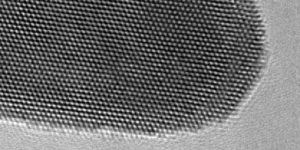Scientists have created a new form of gold so thin that it could form the basis of artificial enzymes for potential use in rapid, point-of-care medical diagnostic tests and in water purification systems.
To do so, the University of Leeds researchers

Because of the gold’s nanoscale dimensions, it appears green in water, and given its frond-like shape, the researchers describe it as gold nanoseaweed.
Next, the researchers measured the thickness of the gold and they discovered it to be 0.47 nanometres – one million times thinner than a human fingernail.
The material is, thus, regarded as 2D because it comprises just two layers of atoms sitting on top of one another. All atoms are surface atoms, there are no ‘bulk’ atoms hidden beneath the surface.
Lab tests showed that the ultra-thin gold is 10 times more efficient as a catalytic substrate than the larger gold nanoparticles currently used in the industry.
“Our data suggest that industry could get the same effect from using a smaller amount of gold, and this has economic advantages when you are talking about a precious metal,” said Stephen Evans, head of the Leeds’ Molecular and Nanoscale Research Group, in a media statement. “The flakes are also flexible, meaning they could form the basis of electronic components for bendable screens, electronic inks and transparent conducting displays.”
In Evans’ view, there will inevitably be comparisons made between the 2D gold and the first 2D material ever created – graphen
